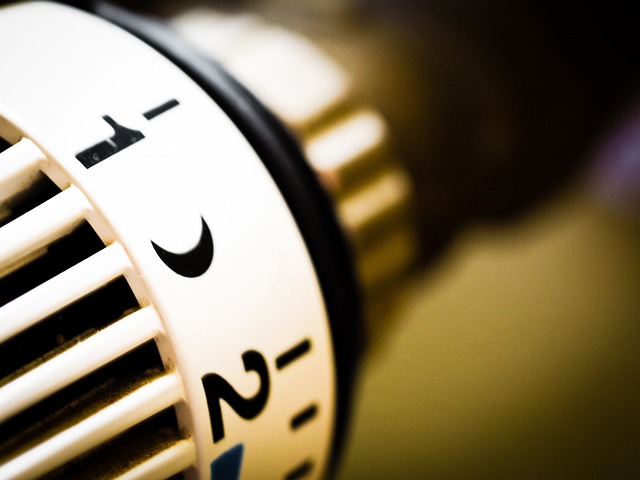Before repairing a radiator, inspect for damage and leaks, prepare tools and safety gear, drain and clean the cooling system, perform a radiator bleeding service, replace faulty components as needed, and maintain regular coolant levels to avoid emergency issues.
“Looking to fix that leaky radiator? This comprehensive guide will walk you through the process step-by-step. First, assess any leaks and damage done to your vehicle’s radiator system. Once ready, gather the necessary tools and safety gear for a successful repair. Drain and remove old fluids safely, then replace or repair faulty components before reassembling.
Remember, proper maintenance involves regular check-ups and, if needed, a professional radiator bleeding service to ensure optimal cooling performance.”
- Assess Radiator Leaks and Damage
- Gather Tools and Safety Gear
- Drain and Remove Old Fluids
- Replace or Repair Components and Reassemble
Assess Radiator Leaks and Damage

Before diving into the repair process, it’s crucial to assess the extent of the damage and leaks in your radiator. Start by allowing the car to cool down completely before inspecting it. Look for any visible signs of corrosion or damage on the outside of the radiator, as these could indicate internal issues. Check for leaks around the hoses, fittings, and cap using a visual inspection and, if possible, a leak detection solution.
If you suspect a leak, perform a simple ‘radiator bleeding service’ to remove any trapped air bubbles. This process involves opening specific valves and running the engine to ensure proper coolant circulation. Regular car radiator maintenance includes checking the coolant level and ensuring it’s topped up with the right mixture, typically a 50/50 antifreeze-water solution. Keep an eye out for any unusual noises or performance issues that might suggest more serious problems requiring professional attention.
Gather Tools and Safety Gear

Before starting any radiator repair work, it’s crucial to have the right tools and safety gear on hand. This includes a set of wrenches for removing and tightening connections, a pair of protective gloves, safety glasses, and possibly a face mask if you’re sensitive to fumes or debris. Don’t forget a new radiator pressure cap replacement as this is a critical component in maintaining efficient cooling. Additionally, having a radiator bleeding service kit can make the process smoother, ensuring no air bubbles remain in your system post-repair.
These preparations are essential for both your safety and the effectiveness of the repair. Always remember to work in a well-ventilated area, as radiators often contain antifreeze that can be hazardous if inhaled. Following these radiator repair tips will not only guide you through the process but also help ensure your comfort and confidence throughout the task.
Drain and Remove Old Fluids

Before you begin any radiator repair, it’s crucial to start with a clean slate. The first step in this process involves draining and removing old fluids from your vehicle’s cooling system. This is an essential part of maintaining a healthy and efficient coolant system, ensuring that no contaminated or degraded fluid remains. Start by locating the drain plug typically found at the bottom of the radiator. Using the appropriate tools, such as a drain pan and a wrench, carefully remove the plug to allow the old coolant to flow out completely. Once drained, give the radiator and cooling system components a thorough rinse with clean water to eliminate any residue or debris.
This process, often referred to as a radiator bleeding service, is a critical step before topping up your radiator fluid (coolant system flushing). By removing the old fluids, you create an opportunity for fresh, clean coolant to circulate effectively, enhancing the overall performance of your vehicle’s cooling system. This is especially important in identifying and rectifying any air pockets that may have formed over time, which can impact the system’s efficiency.
Replace or Repair Components and Reassemble

Once you’ve identified the faulty components in your radiator, the next step is to decide whether to replace or repair them. Many times, a simple repair can extend the life of your radiator, especially if the issue is minor. For instance, a small leak might be sealed with new gaskets or O-rings. However, if components like the thermostat or radiateur are damaged beyond repair, replacement is necessary.
After replacing any faulty parts, it’s crucial to perform a thorough radiator bleeding service. This involves removing air bubbles from the car cooling system maintenance to ensure optimal performance and efficiency. A good home radiator bleeding guide can help you through this process. Remember, proper maintenance, including regular checks and timely repairs or replacements, will not only extend your radiator’s lifespan but also prevent emergency situations that might require an urgent call to an emergency plumber Bromsgrove.
Repairing a radiator is a feasible task for car enthusiasts with some mechanical knowledge. By following these simple steps, from assessing damage to reassembling, you can tackle leaks and keep your vehicle running smoothly. Remember, proper safety gear and the right tools are essential for a successful radiator repair job. If you’re unsure or encounter complex issues, consider seeking professional assistance for a seamless radiator bleeding service. With the right approach, you’ll have your car’s cooling system back in top shape in no time!
